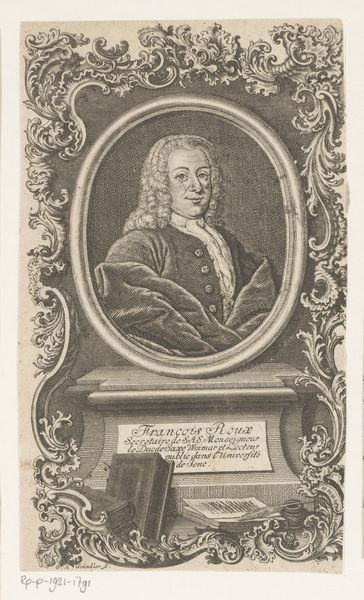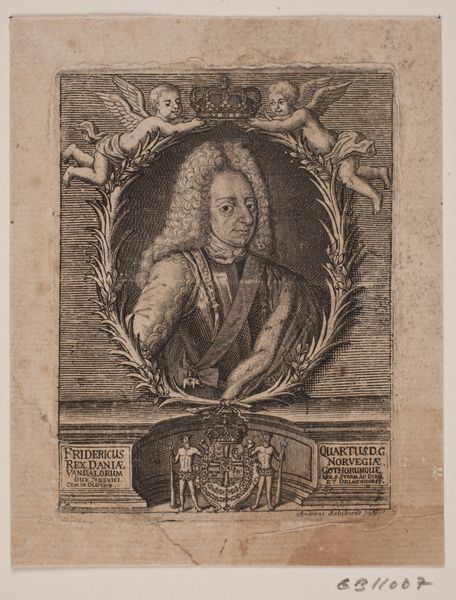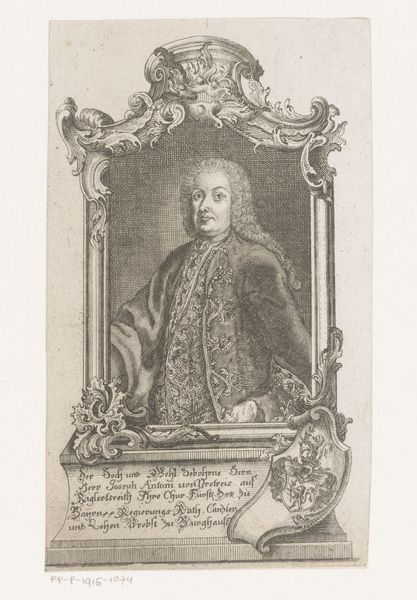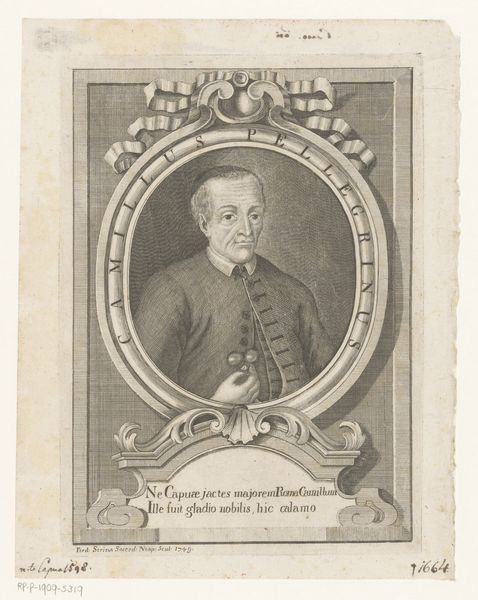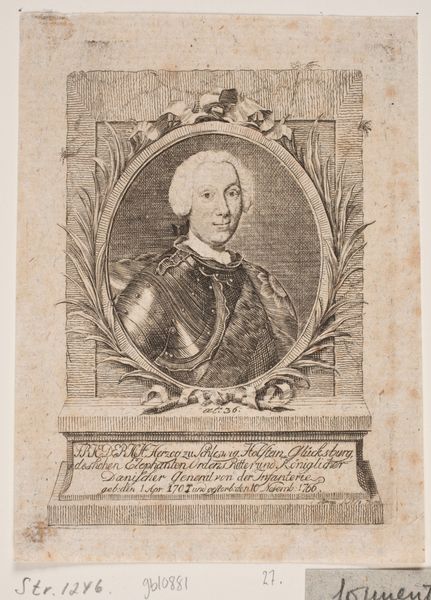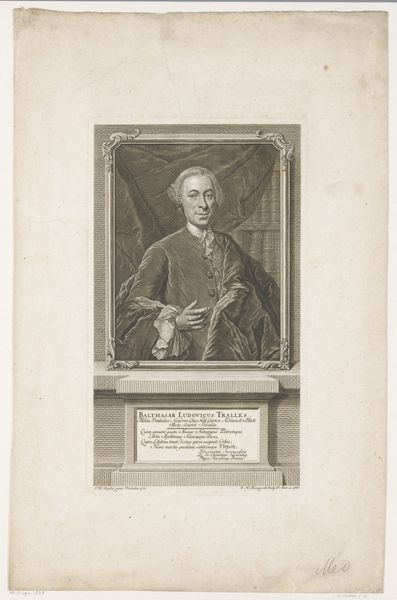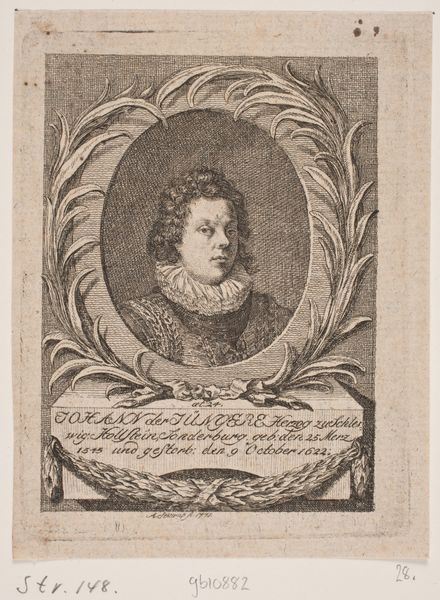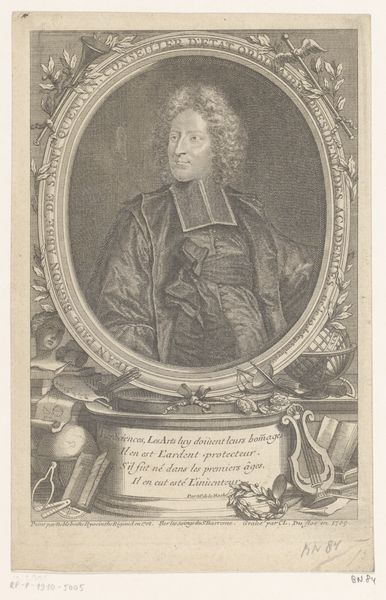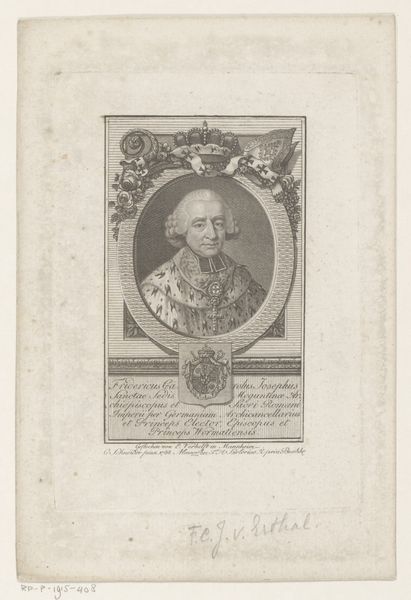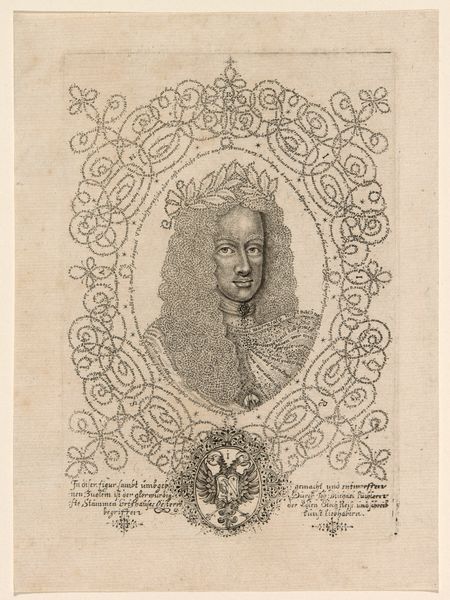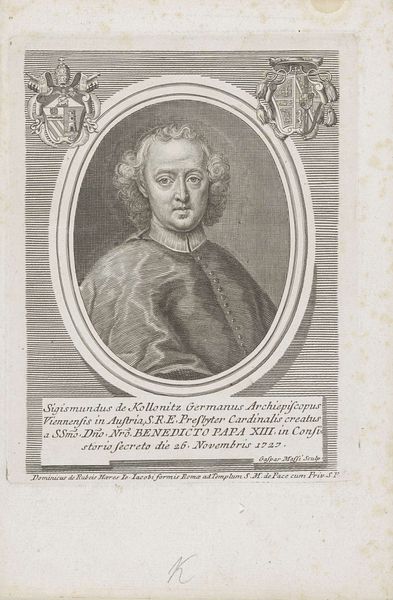
Dimensions: 111 mm (height) x 86 mm (width) (bladmaal)
Curator: Here we have a piece from SMK, Statens Museum for Kunst: a print of "Hertug Frederik Henrik Vilhelm af Lyksburg." It's an engraving dating somewhere between 1754 and 1811. Editor: My first thought is that it seems so formal, so stately! The laurel wreath and the intricate detailing give a real sense of aristocratic power. But there's also something a bit…stilted about it? Curator: That rigidity you perceive is, I think, reflective of the societal expectations and artistic conventions surrounding portraits of nobility during that era. Consider the purpose such images served: projecting legitimacy, status, and dynastic continuity. Editor: Absolutely. And the clothing—the formal attire, the decorations—are all part of constructing that image of power. It's interesting how the individual, whoever he was, is almost subsumed by the performance of status. I wonder, how much of the “real” person is in there? Curator: Well, artistic licenses always play a role. We are not viewing an unmediated reality but an image consciously crafted to meet public and political expectations. Notice how his expression seems neutral, almost vacant. Again, not unusual for these depictions, focusing on idealised representation. Editor: Right. But the detail in the engraving is incredible. You can see the individual strands in the wreath and every fold in his coat. All that line work must have taken extraordinary skill. Also, notice the inscription at the bottom? That grounds the image. Curator: The text is also a very valuable layer in this visual-historical argument because this not just someone. This individual, Frederik, embodies political relationships of class, lineage, profession. He needs all the proper symbols and identification that come from this visibility as a symbol. Editor: Looking at it through today's lens, though, it's hard not to see the inherent inequalities in the social structure it represents. All that power concentrated in one person. What was life like for everyone outside the frame, literally, beyond that circle. Curator: I agree. Viewing the artwork necessitates not only aesthetic appreciation but also a critical awareness of what it communicates, and perhaps even legitimises, about hierarchies of status, gender, and control in the historical society. Editor: Exactly. It’s a potent reminder that even something seemingly innocuous can carry a significant political charge. Thanks for offering insights! Curator: It has been insightful to have you examine this artwork with me; understanding images this way gives meaning for our shared world today.
Comments
No comments
Be the first to comment and join the conversation on the ultimate creative platform.
